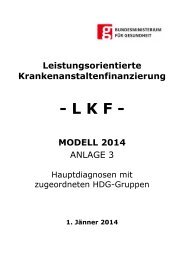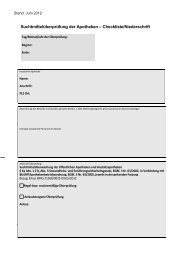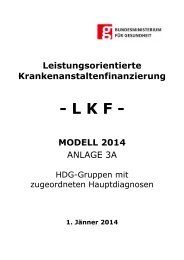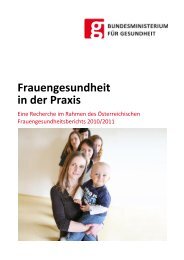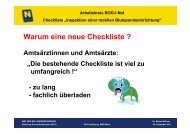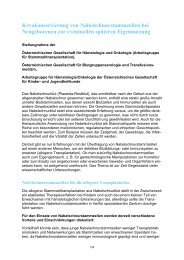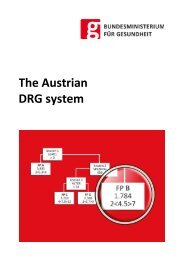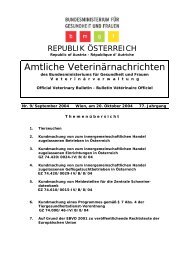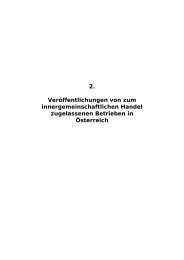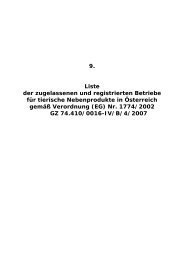Report on the Drug Situation 2010 - Bundesministerium für ...
Report on the Drug Situation 2010 - Bundesministerium für ...
Report on the Drug Situation 2010 - Bundesministerium für ...
You also want an ePaper? Increase the reach of your titles
YUMPU automatically turns print PDFs into web optimized ePapers that Google loves.
play <strong>the</strong> most important role in <strong>the</strong> c<strong>on</strong>text of substance use that requires treatment<br />
(see, e.g., EMCDDA 2009). The share of cannabis named as a primary drug is between<br />
17% and 32%, depending <strong>on</strong> <strong>the</strong> setting. In part, this has to be qualified, however,<br />
because a very high percentage of clients who <strong>on</strong>ly use cannabis have been referred to<br />
compulsory treatment: for instance, this applies to 61% of people undergoing l<strong>on</strong>gterm<br />
outpatient treatment (see also Chapter 4.1).<br />
Figure 5.2<br />
People entering drug-related treatment, by primary drug and type of service<br />
Share of clients by primary drug<br />
90%<br />
80%<br />
70%<br />
60%<br />
50%<br />
40%<br />
30%<br />
20%<br />
10%<br />
0%<br />
80%<br />
56%<br />
54%<br />
40%<br />
20%<br />
13%<br />
9%<br />
11%<br />
8%<br />
3% 3%<br />
1%<br />
22%<br />
14%<br />
10% 11%<br />
0% 0% 1%<br />
2%<br />
34%<br />
30%<br />
22%<br />
20%<br />
8%<br />
6% 6% 5%<br />
Opioids Cocaine Stimulants Tranquilisers/<br />
hypnotics<br />
Hallucinogenic<br />
drugs<br />
Cannabis<br />
Alcohol<br />
Short term c<strong>on</strong>tacts (n = 5 513) Low-threshold services (n = 580)<br />
L<strong>on</strong>g-term outpatient treatment (n = 3 591) L<strong>on</strong>g-term inpatient treatment (n = 1 476)<br />
Note: Multiple answers were permitted.<br />
Source: GÖG/ÖBIG <strong>2010</strong>a, DOKLI analysis of client year 2009; representati<strong>on</strong> by GÖG/ÖBIG<br />
Approximately half of <strong>the</strong> clients turning to <strong>the</strong> respective services (except short-term<br />
c<strong>on</strong>tacts, where this aspect is not documented) have already entered opioid<br />
substituti<strong>on</strong> treatment (OST started in <strong>the</strong> course of <strong>the</strong> provisi<strong>on</strong> of drug-related<br />
services is not documented in this c<strong>on</strong>text), with <strong>the</strong> share of clients undergoing<br />
substituti<strong>on</strong> treatment rising with age.<br />
The DOKLI data of 2009 c<strong>on</strong>firm former results regarding <strong>the</strong> great relevance of<br />
snorting also am<strong>on</strong>g users of heroin or o<strong>the</strong>r opioids, which is important with regard<br />
to harm reducti<strong>on</strong>.<br />
46 © GÖG/ÖBIG, <str<strong>on</strong>g>Report</str<strong>on</strong>g> <strong>on</strong> <strong>the</strong> <strong>Drug</strong> Situati<strong>on</strong> <strong>2010</strong>



